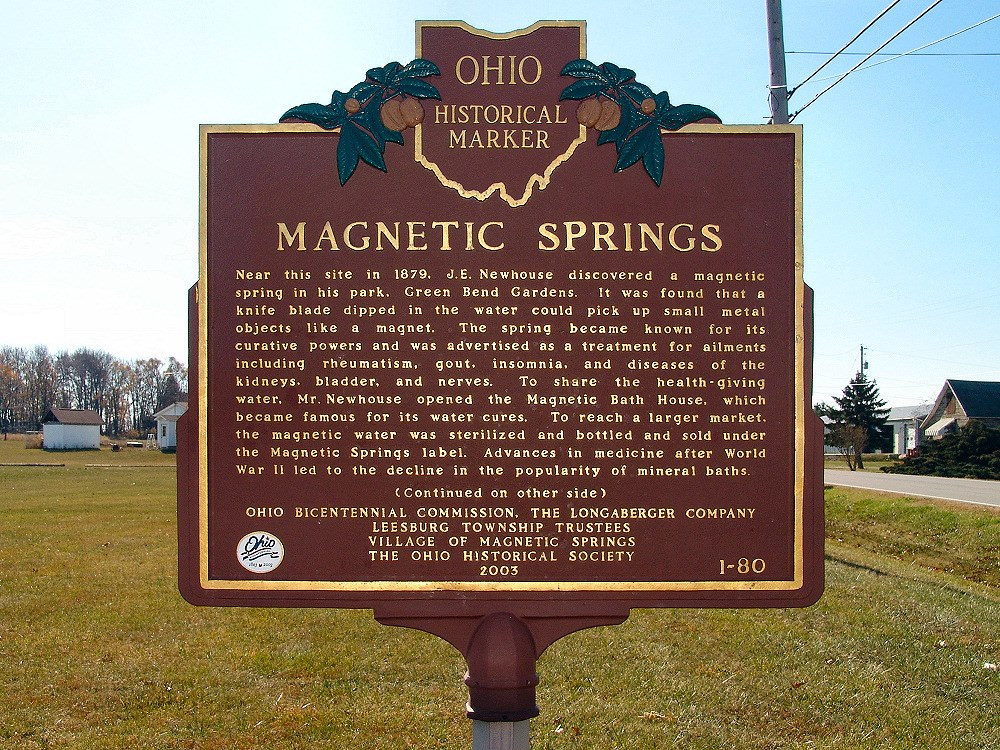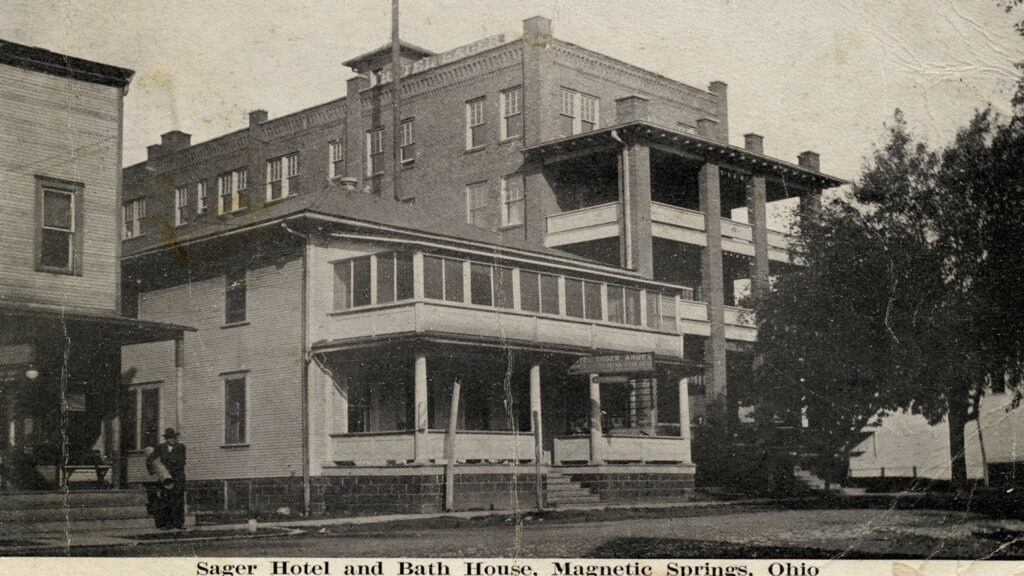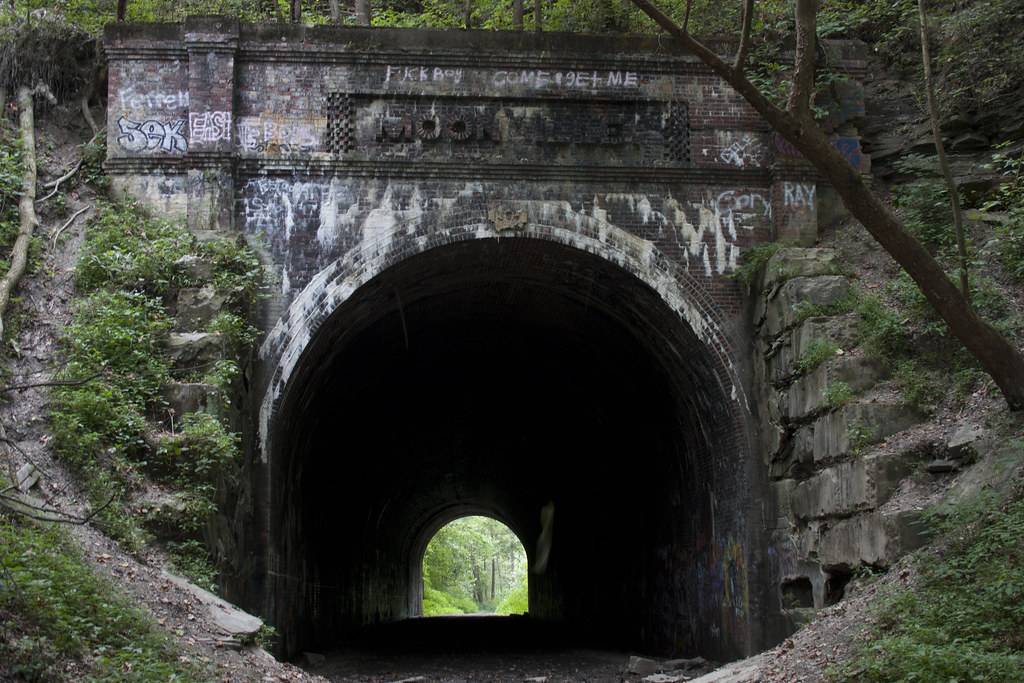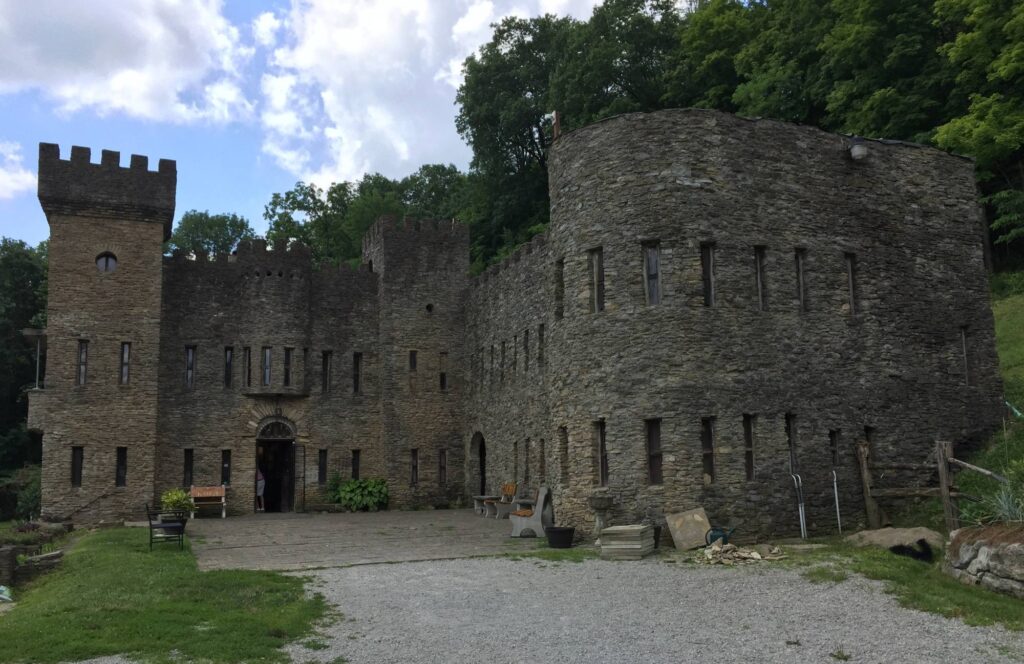Modern Medicine has come a long way since the 1800s and sometimes it can be hard to really understand what it was like way back when because most of what we understand today was still a mystery at that time. Today, we can look back at many of the “medical procedures” that were being done, laughing and pointing at the absurdity of the whole thing. Yes, today it’s kind of funny to think about medical patients getting an enema for all sorts of medical and psychological reasons, and maybe we can laugh at the idea of using leeches to cure disease because that’s easier than cringing when we think of ourselves covered in those nasty little buggers.
By the late 1800s, physicians were just starting to understand things like viruses and bacteria and how they cause illnesses. They may have understood some of how the human body works, but not nearly as much as we do today. (Although to be fair, the biological reason for some organs – we’re looking at you, appendix – still isn’t fully understood, either.)
In 1886, for example, Coke-A-Cola was released into the world as a substitute for morphine (although it did have a little extra ingredient you won’t find today – cocaine) and quickly became the temperance movement’s choice for a non-addictive alternative to alcohol. (Yeah, sigh, so much they had yet to learn.)
Another thing that was highly different was where people went for their medical needs. Some villages or communities had a physician or two, but you’d only go there if things had gotten real bad. Otherwise, you would just stop by the local general store, and speak with the chemist (or pharmacist) so they could sell you the latest and greatest new thing that maybe could cure you, but maybe couldn’t.
Over in Europe, they had these lovely things they called spas and people would go to them to cure all sorts of physical (and sometimes psychological) ills. I know what you’re thinking, “bathing” as a way to cure disease may seem a little off … but, honestly doesn’t the idea of relaxing in a pool of hot water after a long stressful day sound at least slightly appealing?
When we think about going to the “spa” today, we think of maybe sitting in a hot tub to relax our muscles, or maybe getting our hair and nails done, getting a facial or a massage or just getting away for a short time where you don’t have to think about your neighbor’s constant fighting about how she’s sick and tired of going to the same restaurant every week and just once wants to try someplace else, but no, her husband likes the same old and starts to think that if she’s tired of his favorite restaurant that means she must be getting tired of him, too, so he accuses her of not loving him anymore, at which point she threatens to spend a week at her sisters and you’re thinking great, I can get some rest, but no she doesn’t leave the house, she stays and has the exact same fight the following day and the day after that and the day after that and I’m sorry, what was this post about again?
But, most of what we think about “spas” or “health resorts” today have their origins in the old European Spas that were all the rage in the 18th and 19th centuries. And one perfect example of this happened right here in Ohio.
The Birth of Magnetic Springs, Ohio
In the beginning of the nineteenth century, Leesburg Township (Union County) was mainly forrest until a man named J. W. Hoskins built a cabin in the area and began using those trees for lumber. In 1872, J. E. Newhouse purchased a large plot of this newly deforested land and had planned on settling there, establishing a nursery and garden that catered to nearby farms. Life for him would be good, except for one thing – the condition of the road to his property. Frequent rains turned the unmaintained road to mud, which made traveling to and from his property something between extremely difficult and downright impossible.
Newhouse petitioned the commissioners to convert the small dirt road into a pikeway, which would help him (as well as other travelers) immensely. The project was accepted, and while it was underway, he planned on converting one of the sites where the dirt was being dug up into a fish pond. In order to achieve this, he needed to dig a well, which he did. He expected to be able to dig so far before reaching the bedrock, but that didn’t happen. Instead, the well started to fill with hot water, which began to gush up with such force it looked more like a fountain.
As most people had never seen such a thing before, many people began to visit the site, some of whom got into the water and told Newhouse that doing so made them feel much better. A few people with kidney issues said their conditions had improved, same with those with arthritis. Before long, word of the “miracle spring” was making Newhouse’s stream more popular than he had ever imagined.
Newhouse’s spring was a bit different than other mineral springs, such as the popular ones in Pennsylvania and New York. This one, they discovered, had magnetic properties. The water wasn’t magnetic, just the metals and minerals it contained. So, they felt they had something even better than those other natural springs… and others knew it, too.
In 1878, M. F. Langstaff became Newhouse’s partner in the nursery business when the two men got the idea of building a bathhouse to tap into this new springwater. Immediately, people began visiting not just from nearby cities, but from all over the state. Many were sick and visiting for the spring’s healing qualities, but many of his visitors were perfectly healthy, just wanting to make themselves feel better. Or, maybe just get away for a few days.
Newhouse started getting ideas. He started picturing his Magnetic Springs as more of a vacation getaway than a health resort – but of course, it would be both. At his bathhouse and hotel, he started offering all sorts of different events and activities that he was sure would bring even more people in. Soon, his hotel and bathhouse were holding interesting events, like themed dinners, horseback rides, or an afternoon of games on the sprawling lawns.
The following year, they plotted Newhouse’s land and named the area Magnetic Springs. They had no problem selling off plots of land and the town grew quickly. Soon, it got a general store and a post office, two dry goods stores, a grocers, a drug store, a billiard hall and a restaurant, a livery, a meet market, and even a photographer gallery, not to mention several hotels and boarding houses.
Two more springs (neither containing the magnetic minerals) opened nearby, which really helped the town to flourish.
According to newspapers all across the state (and beyond) many people were flocking to Magnetic Springs in an attempt to alleviate their aches and pains or to help them recover from (hopefully be cured of) a variety of illnesses. Occasionally a death would be reported, which was to be expected anywhere the ill would go to try and feel better. But, mostly the papers mentioned Magnetic Springs as being the place Mrs. So-And-So would go for her rheumatism, or how the wife of Mr. So-And-So went for an extended stay in Magnetic Springs where she reports she is breathing much better.
But, sometimes lurking in the shadows, sometimes people set off to Magnetic Springs for other purposes, such as a weekend of frivolity and relaxation. And why shouldn’t they? Magnetic Springs had some of the most comfortable lodgings in the area, taverns, and pool halls to have some fun in, or maybe even get some culture at the local theater.
None of it seemed nefarious, at least until Prohibition rolled along.
Magnetic Springs – Temperance and Prohibition
On Jan 22, 1922, eighty-year-old Mary McFadden was sworn into office as The Mayor of Magnetic Springs. No sooner had she walked into her office, she was ready to quit. Noting the dust and cobwebs, she remarked something about the town needing a cleaner, not a mayor. A month later, word of her election had reached Hollywood. Two film studios sent motion picture cameras out to film newsreels about Magnetic Springs (and her). In one of them, she said she wanted to “mother the town, not lord over it”.
Several years before she entered office, the United States had passed the Eighteenth Amendment to the Constitution which more or less made alcohol consumption illegal and started a period known as Prohibition. Magnetic Springs, Ohio was like most towns at the time – some people brooded over the victory of outlawing pretty much all forms of alcohol while others thumbed their noses at officials by brewing their own or drinking in the hidden areas of the local taverns.
Mary McFadden made it clear that she wanted all the taverns to shut down, as well as the pool halls and gambling rooms. She wanted Magnetic Springs to be a paragon of good moral values and not the place to go for a week of fun. The main lure of the place should be, she thought, a place for the sick to get better or where good, decent men and women could walk in the park without worrying about what some drunken moonshiner was doing.
While McFadden did throw everything she possibly could at supporting prohibition and trying to get rid of the gambling halls and trying to make life difficult for anyone she believed to be “undesirable” – that seemed to have little effect in the long run. Alcohol consumption went underground, just like everywhere else, it seems … and the gamblers hid alongside them.
But, that’s not why Mary McFadden has been noted in the history books.
I suppose we need to back up two years. Before 1920, women had a strange history of whether they were allowed to vote or not. In 1789, the United States Constitution granted the states the right to say who could or couldn’t vote. Most states at this time granted it only to white males who also happened to own property (or paid taxes) although some states wanted to be a bit different. New Jersey, for example, allowed female land owners regardless of skin color or gender to vote, unless they were married. Of course, this didn’t last long as things changed in 1807 so New Jersey females could no longer vote. Then in the 1830s, Kansas started allowing women to vote, but only in certain circumstances.
In the decades to come, some states would allow some women the right to vote while others didn’t. Sometimes, women had to qualify to vote, by taking literary or general knowledge tests, which were often designed to make women fail. Throughout this time, you also had “voting rights” groups pop up, then the Women’s Suffrage Movement, with lots of shenanigans on both sides going on…
And then we get to 1920 when the Nineteenth Amendment was passed telling states they couldn’t deny women the ability to vote. And, for a brief time, things got kind of interesting in Ohio.
See, when the Ohio Legislature voted to approve The Eighteenth Amendment, many people in Ohio were enraged because Ohio law stated that voters should have had the chance to have their say, and the Ohio Lawmakers did not wait the required ninety days before signing the amendment into law. At the next election, Ohio Voters overwhelmingly voted to NOT adopt the eighteenth amendment (prohibition) and they tried to force Ohio to nullify Prohibition.
Supporters of Prohibition, as well as many from the Women’s Suffrage Movement sued, and the case now known as Hawke v. Smith was now a thing. The question at hand wasn’t technically about either subject (Women voting or Prohibition) but rather about whether or not Ohio’s adoption of the eighteenth amendment was legal or not. (So, it was about State’s Rights. Kind of) The Ohio Supreme Court sided with the Ohio voters who were attempting to overturn the amendment, but the United States Supreme Court went the other way. This meant that Prohibition was alive and well in Ohio (at least until the next Constitutional Amendment came along that said “Nevermind” to the whole thing). But that’s a few years in the future.
The political climate of Ohio in 1922 is what led Mary McFadden to national fame.
Both the Temperance Movement (pro-Prohibition) and the Women’s Suffrage Movement (pro-women voting) technically represented a minority of the national population. To be blunt, most people did want to enjoy a cocktail whenever they wanted and didn’t think the federal government should be allowed to tell them otherwise. Likewise, most people did not want women to be allowed to vote and strongly believed that because the United States Constitution gave the power to decide who could and who couldn’t vote up to the states, the nineteenth amendment was wrong.
And in the middle of all that, Magnetic Springs, Ohio elected a woman as mayor.
And this woman was both a suffragette and someone actively trying to shut down the bootleggers and gamblers and run them out of town.
This lasted a couple of years before it was time to elect a new Mayor. The following year, Mary McFadden passed away.
The Decline of Magnetic Springs
There is a strong case that can be made that advances in Modern Medicine caused the downfall of Magnetic Springs, Ohio.
The more people (or at least the medical community) started to understand illnesses, how to treat and how to prevent them, modern medicine started to provide better ways of handling everything from chronic pain to various diseases (such as Rheumatism, Polio, and others that people had sought relief from mineral spas). Suddenly, people wanted to take a pill to alleviate arthritic pain or take an injection if it meant they didn’t have to worry about some other condition.
The release of a polio vaccine in 1955 is arguably one of the biggest events that started the decline of Magnetic Springs (and non-magnetic ones, too).
Even with all the medical advances in the early twentieth century, some people still found some benefit in spending a few days (or maybe a whole week) in natural spring resorts. However, as fewer and fewer people made the trip, the large hotels began to close and be demolished for simpler dwellings, small businesses on the main streets and single-family residences on the rest.
The final hotel closed its doors in the 1980s, the final nail in the coffin of the magnetic springs spas.
But, that does not mean we can’t count the place out, even though some people want to place it on a list of Ohio Ghost Towns, saying the town no longer resembles (or has nearly the daily traffic) it did when the resorts were still open. There are, still, a few places to visit, such as The Magnetic Springs Cafe (I hear the food is good) or sit for a spell down the block at the Magnetic Springs Park.
And be sure to check out the Magnetic Springs Historical Marker – it’s on Main street at the Ball Fields.

Dig Deeper…
- Magnetic Springs Historical Marker
- Finding Utopia: Another Journey Into Lost Ohio by Randy McNull (ISBN: 978-1606351314)
- Utopia, Ohio, 1844–1847: Seedbed for Three Experiments in Communal Living – American Communal Societies Quarterly ISSN 1939-473X
- Magnetic Springs, Ohio Facebook Page



